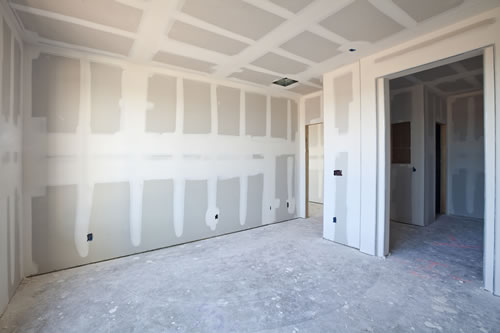
Hardwood floors are a great investment, but how do you know when they need to be replaced?
 1.Springy, spongy or soft spots
1.Springy, spongy or soft spots
None of these words should be used in a sentence describing hardwood floors. If any of these words are relevant to something you feel when walking down the hallway, up the stairs or over to the conference room there is a chance that your floor, or subfloor, is damaged. This could mean decay or rotting due to moisture.
2.Peeling, buckling or cracking
Once again, these qualities are not normal for hardwood floors. If you notice any of these occurring, it is likely your floors are suffering from water damage. Warped and uneven floors are also a sign of this. First, you should make sure that your subfloors have not been affected by the water. A sign that the subfloors are also damaged is visible sagging or drooping. If this is the case you will need to consider replacing them as a solid foundation is necessary before installing your choice of floor. If there has not been any damage you will only have to replace the hardwood.

3.Scratches
Looking down and finding scratches on your hardwood floor can be heartbreaking, but it is no reason to go ahead and replace them entirely. Instead, consider refinishing the floors to bring them back to their original state. However, part of refinishing hardwood floors is sanding them down to get rid of the scratches, which leads to a decline in the quality of the wood. It is suggested that you lean towards replacing the boards after your fourth time refinishing to ensure they are up to par.
4.You can’t remember when you first installed them
Like most things, with time hardwood decays. If you think that it has been decades since you last installed your hardwood floors, it could be time to replace them. Replacement is inevitable, but this time around you will know how to take better care of your floors!
5.Gaps or movement
Shifts in planks is a warning sign that something is wrong. In the winter months you may notice the gaps between the boards getting larger. This should not be a cause for alarm, as wood expands with heat and contracts when it becomes cold outside. However, if you are noticing extreme movement between floorboards there is an issue. If this is the case the refinishing is not an option which means replacing is the only way to go.

While the idea of replacing hardwood floors can be stressful, it also gives you the opportunity to change the look of your business. re:fab can help with the installation, refinishing and any other carpentry needs you may have.
Sources:
- Tony’s Flooring Centre: Signs You Need to Replace Your Hardwood Floor
- HGTV: When Hardwood Floors Are Worth Saving
- Daigle Hardwood Flooring: How to Determine if your Wood Floor Needs to be Replaced
- Networx: Do I Need to Replace My Subfloor?








